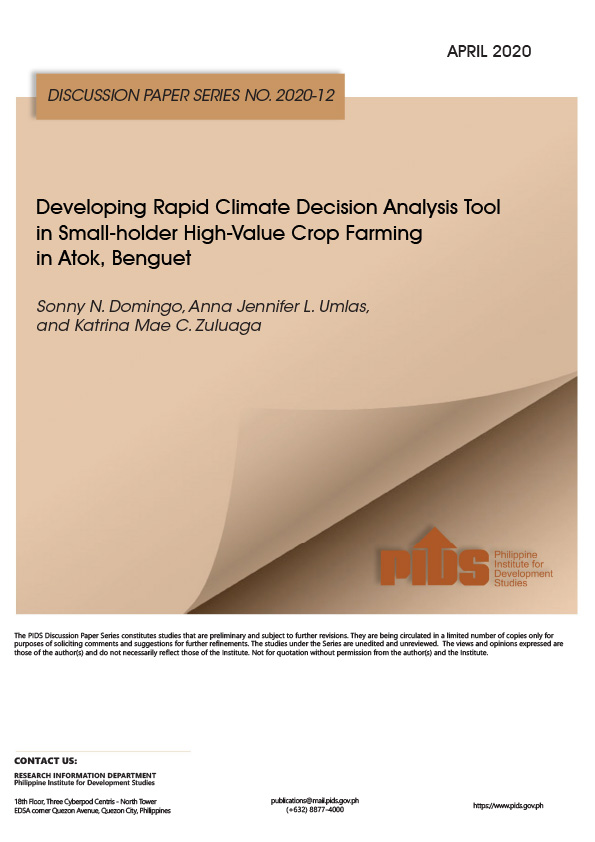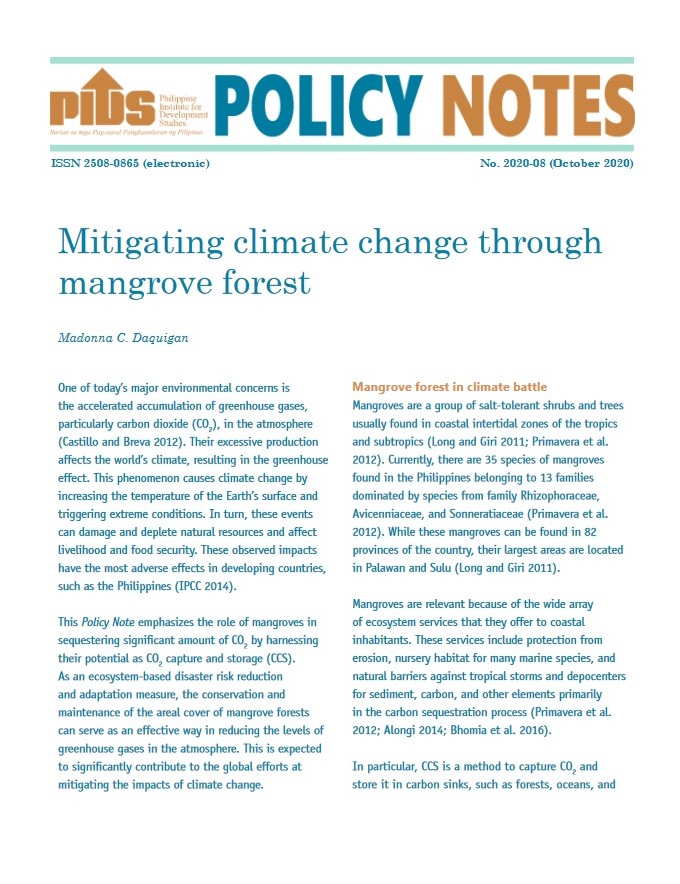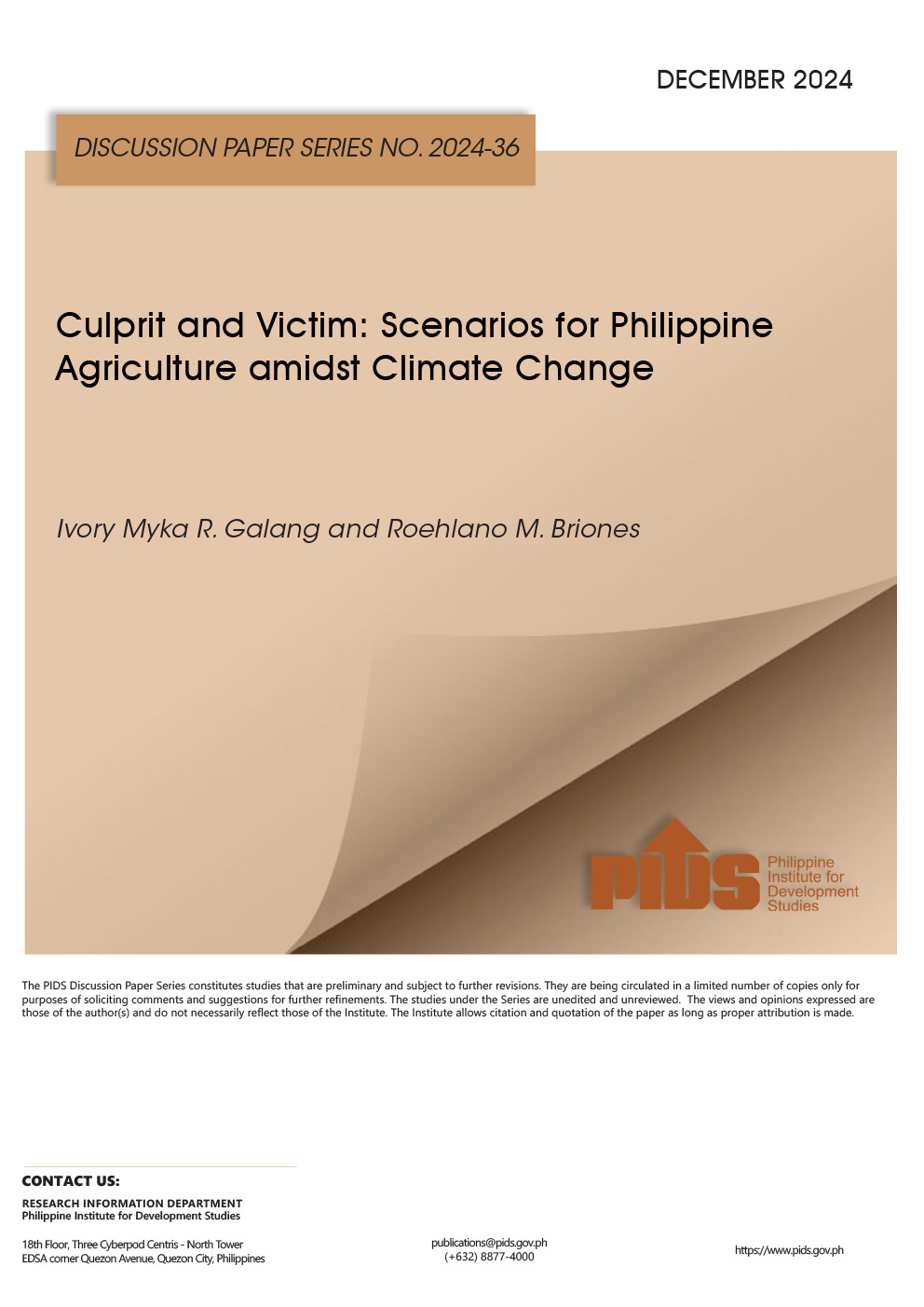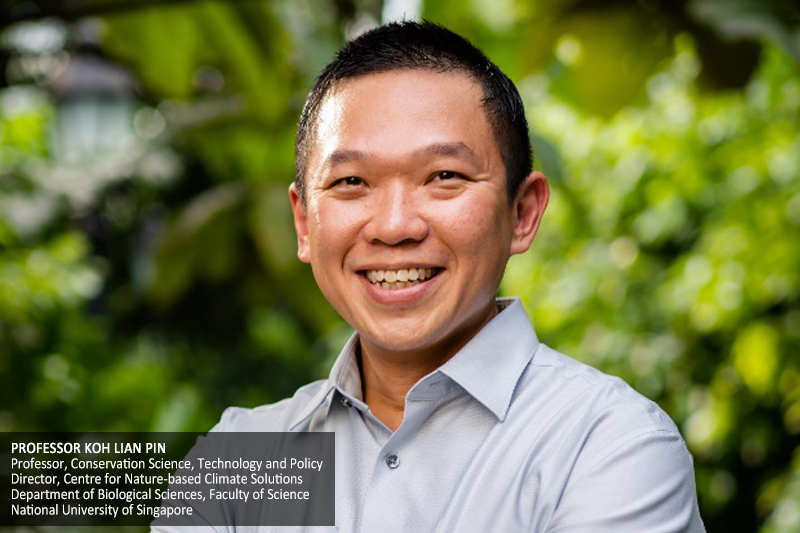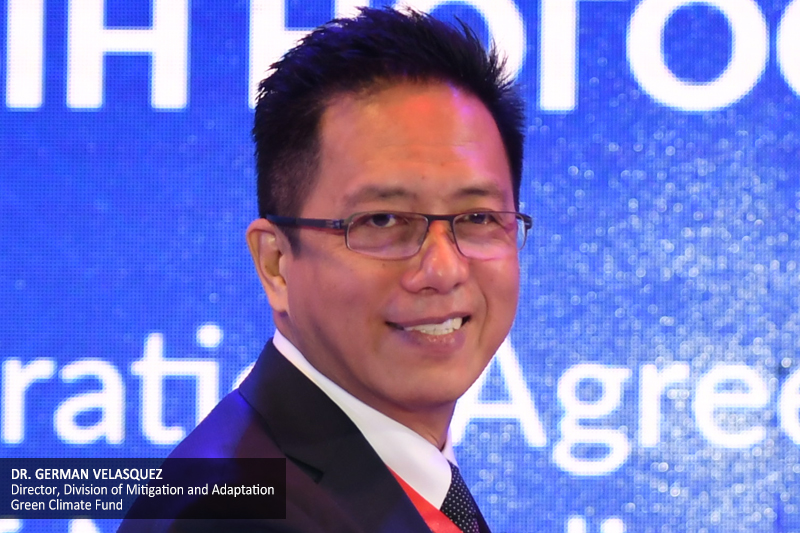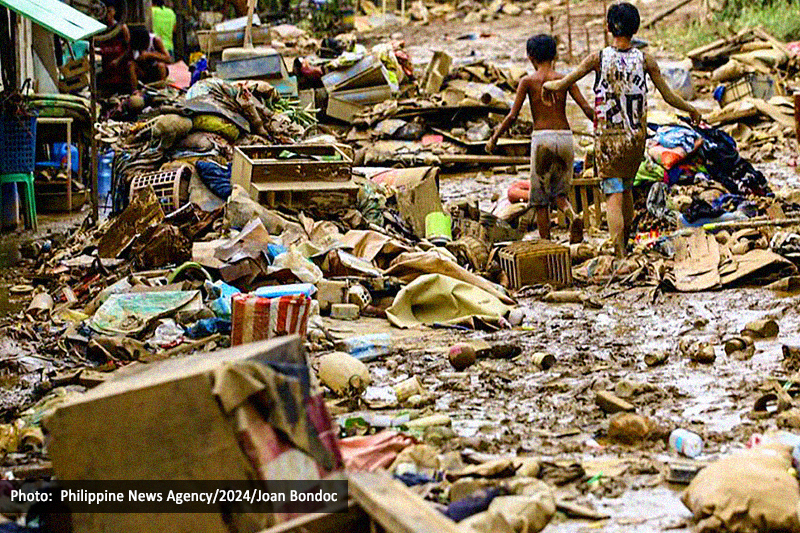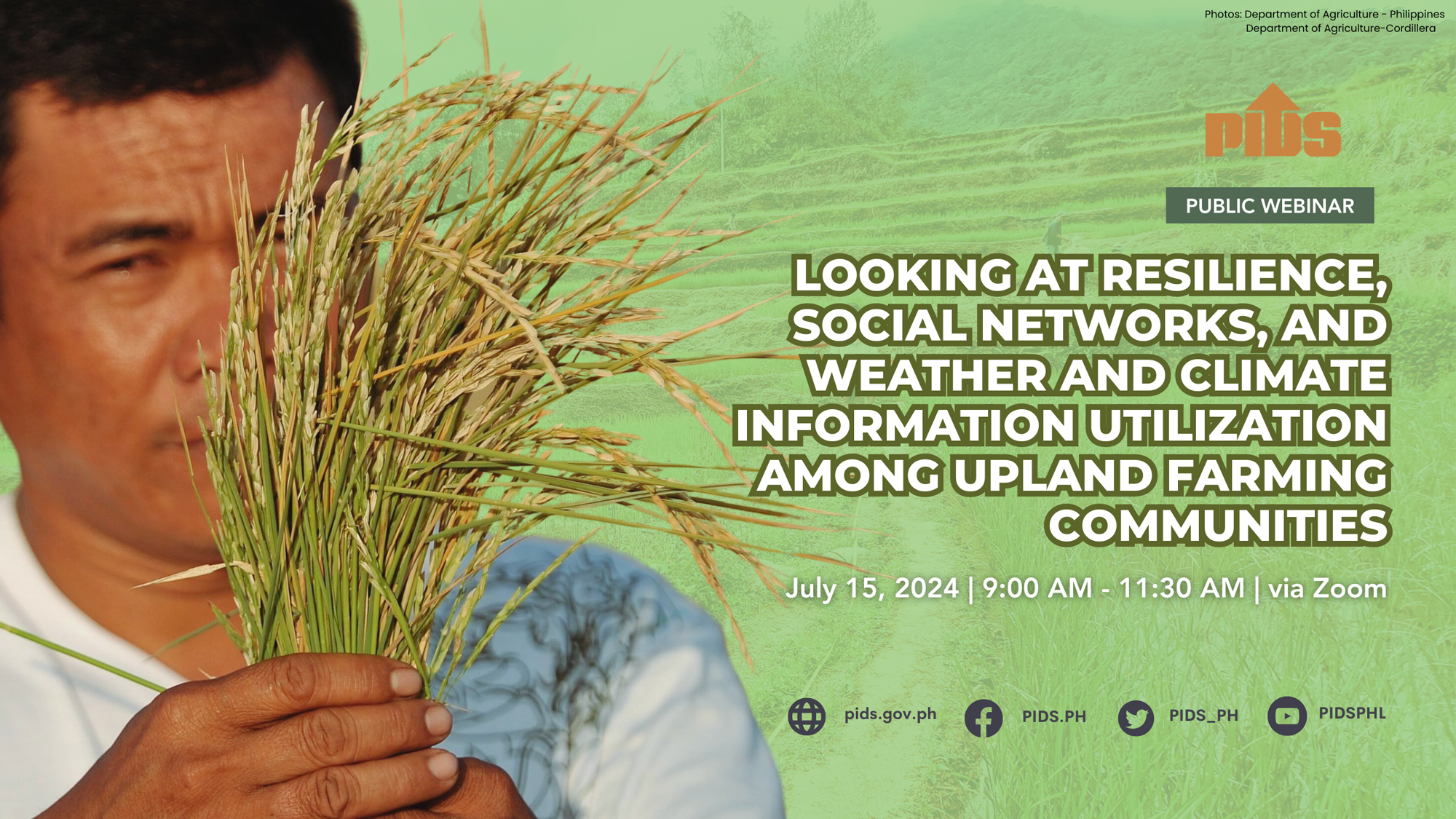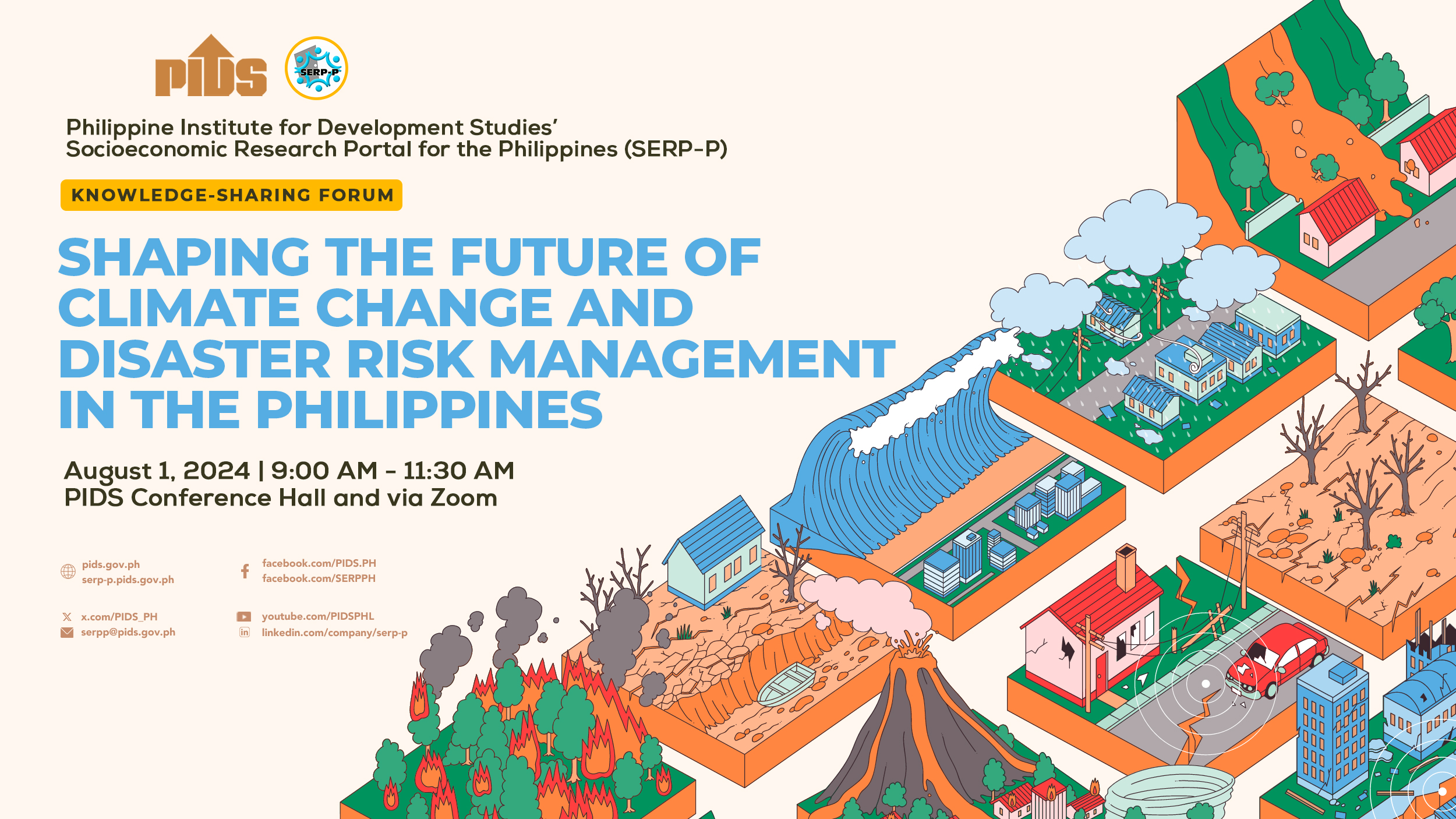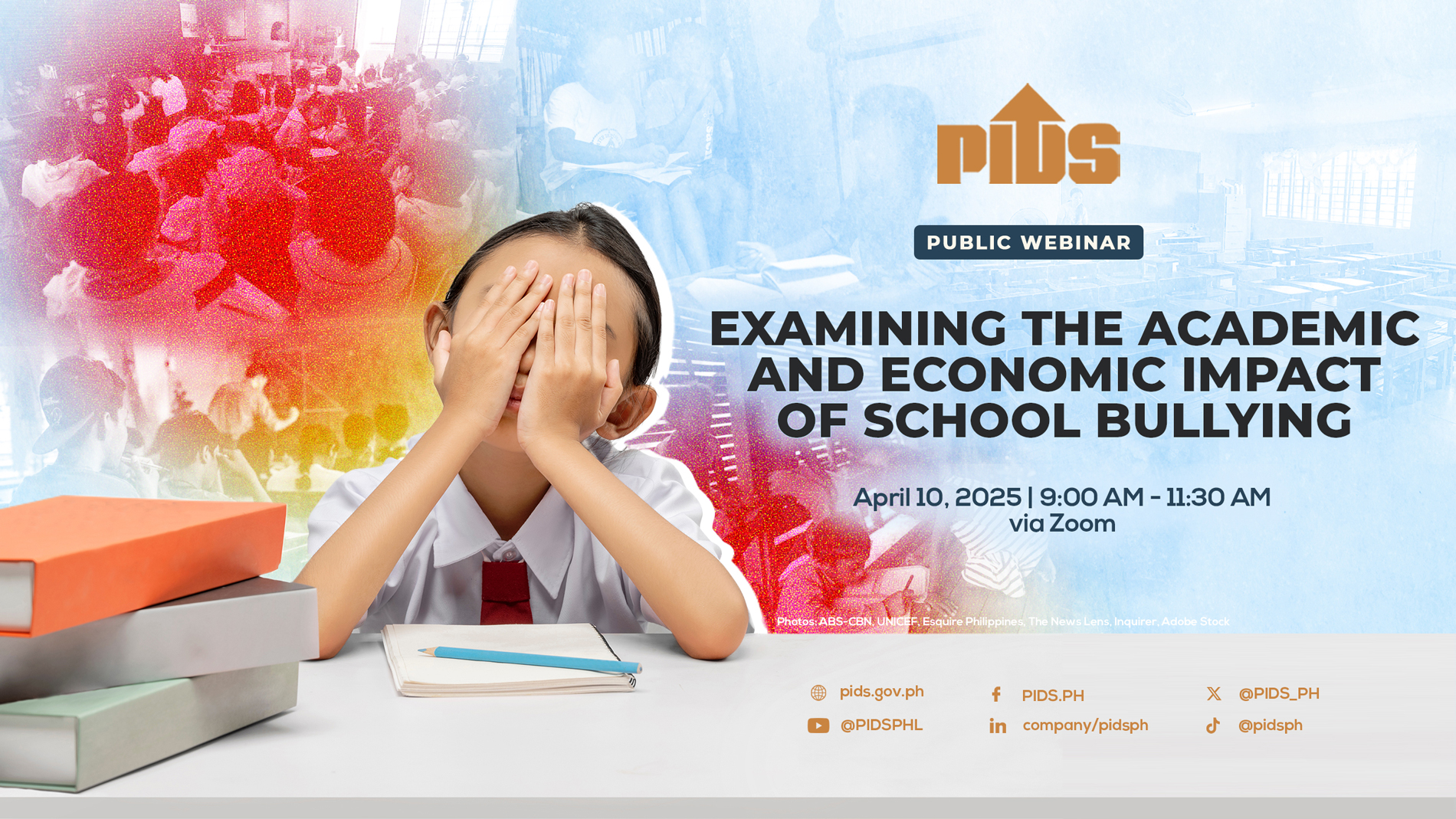NADI, Fiji—The greenback may lead to greening the earth, so some believe. However, for experts at a conference here last week, money is just one of the weapons in this perennial contradiction of man against nature as the latter appears to have the upper hand.
At the 52nd Asian Development Bank (ADB) Annual Governors’ Meeting on this Pacific island, a panel of experts organized by the ADB Independent Evaluation Department (IED) raised the urgency in addressing climate change. The experts said Asia and the Pacific has a high exposure to climate change.
They said that from the start of the millennium up to last year, around 84 percent of the 206 million people on average affected by weather and other disasters globally each year were from the region.
These and other disasters equaled 7 percent of GDP from 2000 to 2018 in Pacific countries, far higher than in the sub-regions of Asia, which range from under 1 percent in East Asia to 6 percent in South Asia.
Among the highly destructive climate-related events were the 2016 Cyclone Winston in Fiji, causing estimated losses of 31 percent of GDP, and the 2017 Cyclone Pam in Vanuatu, causing damage equivalent to around 64 percent of GDP.
Billions in damages
BASED on assessments made by the United Nations Environment Programme (UNEP), the Philippines is one of the countries most vulnerable to natural disasters.
The National Economic and Development Authority (Neda) said the country incurred at least P388.74 billion worth of damage from disasters between 2011 and 2018.
A 2016 study by the state-owned think tank Philippine Institute for Development Studies (PIDS) titled “Economic Impact of Typhoon Ondoy in Pasig and Marikina Cities Using a Multiweek CGE Model Analysis” said disasters in the country affected 4 million to 6 million people annually.
The PIDS also cited data from the Center for Research in the Epidemiology of Disasters (CRED) and the International Federation of Red Cross and Red Crescent Societies that as of 2012, “almost 20,000 people have died, while 2.7 million people have been directly affected and 94 million indirectly affected by natural disasters from 1992 to 2011.”
The study found that the damage caused by extreme flooding in Pasig and Marikina cities due to Tropical Storm Ondoy in 2009 reached P22.54 billion, and 90 percent of the amount represented the loss of households and businesses located in Pasig City.
The Philippines ranked third overall in the Climate Risk Index (CRI) and scored 20.2, where the lower CRI score indicates a higher level of exposure and vulnerability to extreme events.
Between 1997 and 2016, an average of 860 Filipinos died every year due to extreme weather-related phenomena. This translates to 1 death for every 100,000 population. The country incurred economic losses worth $2.89 billion annually and this accounted for 0.6 percent of GDP during the period.
Using fund channels
ACCORDING to Finance Undersecretary Mark Dennis Y.C. Joven, the government taps several facilities to address climate change issues.
One of these is tapping its war chest.
Joven told the BusinessMirror the government spent P198 billion and around P278 billion in 2017 and 2018, respectively, for climate change and disaster risk mitigation projects.
The government is expected to spend less at P242 billion this year despite 2019 being an El Niño year. Majority or 85 percent of these funds are allocated for the Department of Public Works and Highways (DPWH) for projects such as sustainable infrastructure.
The government has also tapped the $8-billion Climate Investment Fund (CIF), which aims to accelerate climate action by empowering transformations in clean technology, energy access, climate resilience and sustainable forests in developing and middle-income countries.
Based on its website, the CIF’s large-scale, low-cost, long-term financing lowers the risk and cost of climate financing. It tests new business models, builds track records in unproven markets, and boosts investor confidence to unlock additional sources of finance.
Six projects
OF the CIFs available, the Philippines was able to tap Clean Technology Funds (CTF) to finance six projects, five of which were cofinanced with the World Bank and one from the ADB.
Based on the CIF website, it approved $134.48 million for the Cebu Bus Rapid Transit (BRT) project, the Philippines Manila BRT, Renewable Energy Accelerator Program (Reap), Renewable Energy Development (PHRED) project and the Sustainable Energy Finance program, which are all implemented with the World Bank. Also approved was the Market Transformation through Introduction of Energy Efficient Electric Vehicles (e-Trike) project, which is done with the ADB.
There is also the Global Environment Facility (GEF), which extends financing to developing countries and those with economies in transition to meet the objectives of the international environmental conventions and agreements. GEF support is provided to government agencies, civil society organizations, private-sector companies, research institutions, among the broad diversity of potential partners, to implement projects and programs in recipient countries.
In the Philippines, the GEF extended grant financing worth $572.73 million for 111 projects. Through the GEF, the country was also able to gain access to $4.71 billion worth of additional cofinancing with GEF agencies such as the ADB, World Bank, Food and Agriculture Organization, the UNDP, UN Industrial Development Organizations, and the GEF Secretariat.
Insurance vs. catastrophe
Apart from these, Joven said a host of “hybrid” facilities are at the country’s disposal.
One such facility is the parametric insurance, which is funded through a parametric insurance that allows vulnerable LGUs to take out insurance for their protection in case disaster strikes.
In January, the World Bank, which finances the parametric insurance, said it is extending $390 million in insurance against major typhoon and earthquake events in 25 provinces. Under the program, the World Bank enters into an agreement with private reinsurers to provide coverage against disaster and severe weather impacts for national government agencies and the participating provinces.
The renewed policy is facilitated by the World Bank through a catastrophe swap, which provided the Philippine peso equivalent of $206 million in insurance. The panel of risk takers, selected through a competitive bidding process, also doubled under the renewed policy. Risk takers were able to participate in the transaction either through a derivative contract or a retrocession agreement.
The Washington-based lender said insurance payouts are made when predefined parametric triggers are met. The Government Service Insurance System (GSIS) provides the parametric catastrophe insurance coverage. The insurance policy is designed to provide rapid liquidity in the face of disasters to the government, to enable rebuilding and recovery to commence.
New initiatives
THE World Bank is also supporting the Philippines in preparing a sovereign catastrophe bond to complement the existing insurance program by providing cover for more extreme events.
Apart from this, there are regional facilities such as the ADB’s extension of $5 billion to finance projects on the blue economy, ecosystem management, pollution control and sustainable infrastructure.
Bruce Dunn, director of the ADB Sustainable Development and Climate Change Department’s Safeguards Division, said the funds will be provided using various financing modalities such as lending, grants and bond floats. Dunn said the funding, which will be extended starting this year until 2024, is part of the Action Plan for Healthy Oceans and Sustainable Blue Economies for the Asia and Pacific region. The plan was launched at the 52nd Annual Meeting of ADB’s Board of Governors here.
The ADB said the “Oceans Financing Initiative” will leverage public sector funds to create investment opportunities able to attract financing from a range of sources, including the private sector. Technical assistance and funds from ADB and donors, along with innovative financing instruments such as revenue guarantees and credit-enhanced blue bonds, will be used to reduce project risks and make them “bankable.”
The initiative will be piloted in Southeast Asia in collaboration with the Asean Infrastructure Fund and the Republic of Korea. The World Wide Fund for Nature, a longtime partner of ADB, will support the design and implementation of the financing initiative.
Extending loans
IN the Philippines, the ADB will also extend $100 million worth of loans to construct sustainable infrastructure, specifically greenways. The amount will finance the construction of six to seven elevated greenways in congested parts of Metro Manila.
ADB Southeast Asia Director-General Ramesh Subramaniam recently told reporters that the ADB and the Philippine government intend to complete at least one greenway by 2020. The first three locations for the greenways project, which is still being evaluated by the National Economic and Development Authority (Neda), will be North Edsa in Quezon City, Pasig City, and Taft Avenue.
Subramaniam said the models being used for the greenways are those found in Hong Kong, Kuala Lumpur and Seoul. He added that the ADB is also looking at Europe-based designs. He said completing at least one greenway this year or next year would also serve as an example on how to do the succeeding greenways that will be built.
ADB Southeast Asia Department Deputy Director General F. Cleo Kawawaki explained that the greenways can be used by both pedestrians and cyclists. She said the ADB and the government are currently designing a structure to turn this into a reality.
Solving two problems
DESIGNING the greenways this way will ensure the structures solve two problems: road congestion and road safety, Kawawaki said. Traffic along major thoroughfares had cost the economy billions worth of lost economic productivity while road accidents have increased.
On top of these funds, Joven said the private sector also helps shore up climate finance. In February, ADB announced that it invested $20 million in the maiden climate bond issuance of AC Energy Inc., a wholly owned subsidiary of Ayala Corp. in the Philippines. This public listing is the first Climate Bond Initiative (CBI)-certified US dollar climate bond in Southeast Asia listed on the Singapore Stock Exchange.
ADB is an anchor investor in the 10-year tranche, contributing to a total issue volume of $410 million. Proceeds of the bonds will finance renewable energy projects in the Asia and Pacific region, including Vietnam, the Philippines and Indonesia.
This climate bond will be used to support AC Energy’s plans to establish and expand a regional presence in the development of clean energy projects in accordance with environmental best practice.
Strategy 2030
The climate bond is ADB’s third and its first publicly listed climate bond.
In December last year, the ADB invested 5 billion Thai baht in B. Grimm Power Public Co. Ltd.’s maiden 5-year and 7-year climate bonds—Thailand’s first certified climate bond. In 2016, the ADB also extended a guarantee to support an issuance for the Tiwi and Makban geothermal power projects in the Philippines—the first climate bond in Asia.
This investment is in line with ADB’s new “Strategy 2030,” which mandates that at least 75 percent of the number of ADB’s committed operations support climate change mitigation and adaptation by 2030, with climate finance from its own resources reaching $80 billion over 2019-2030.
“Actually, there are a lot of facilities for climate financing, not only at the GAA [General Appropriations Act] level but at the international or multilateral level,” Joven told the BusinessMirror. “So I guess the idea is to come up with bankable projects and match these with the funding source.”
Maturity lacking
IF there are other global and regional funds that are being tapped by the Philippines, however, the Finance Department said they still have no knowledge about them, given these projects are not yet mature.
The DOF said these agencies are coming up with their own projects but encounter challenges such as administrative ones like lag times. But this does not mean that there are no climate financing options available for countries like the Philippines.
“The biggest challenge is really for climate change and disaster risk projects to deal with several departments and agencies,” Joven said. “So, determining who the lead is for a particular project—that’s a challenge.”
Efforts to improve the situation are being worked on, especially given that interest payments, especially those considered the most vulnerable to climate change, or the “Vulnerable Group of 20” (V20), are finding it difficult to keep up with their financial obligations to address their climate change-related needs. The Philippines is a member of the V20.
In a recent study, UNEP said climate change is costing the V20 an additional $62 billion in interest payments alone, including $40 billion in additional interest payments on government debt paid over the past 10 years. Based on their model, it is estimated that the incremental debt cost for the V20 countries was almost $9 billion in 2016 alone. The report said countries with the higher degrees of climate vulnerability face higher sovereign borrowing costs.
Increasing threats
FINANCE ministers from the V20 group of vulnerable economies recently announced new financial instruments in collaboration with international partners at the Spring Meetings of the World Bank Group and International Monetary Fund to ensure continued global economic growth in the face of increasing threats from climate change.
The group aims to lower the cost of capital and unlock large capital inflows to climate-proof the economic development of at least 1 billion people living in some of the fastest-growing regions who are exposed to severe climate impacts.
The V20 has proposed the Accelerated Financing Mechanism (AFM) for Maximal Resilience and a 100-percent Renewable Energy Transition to upscale existing risk mitigation tools, guarantees and blended finance facilities, and a new menu of instruments within MDBs and other development banks for adaptation, resilience and renewable energy projects.
Another V20 instrument, the Sustainable Insurance Facility (SIF), intends to promote private-sector insurance uptake to address climate risks and promote low-carbon development. The V20 sees SIF as a tool that can crowd in investments in risk reduction, enhance credit access, and better manage public contingent liabilities related to infrastructure and social resilience.
“The government considers this as a priority because we are a member of the V20,” Joven said.
Responding to needs
WHILE all these funds are important in responding to the needs of those affected by disasters, Institute for Climate and Sustainable Cities (ICSC) Executive Director Renato R. Constantino said there is much more to climate finance than disaster response.
“The challenges, when it comes to climate finance, are multidimensional,” Constantino told the BusinessMirror on the sidelines of the ADB Annual Meeting in Fiji.
Constantino said this compels governments to look into various permutations in terms of financing that address not only disaster finance but mitigation and adaptation needs.
Disaster response is not the end all, be all of climate finance, according to Constantino.
Unfortunately, many countries, including the Philippines, spend more on disasters rather than mitigating them or adapting to climate change.
He, however, noted that the Duterte administration has been very responsive to the need to address environmental concerns, even more than the previous administration. He said the efforts to clean up Boracay and Manila Bay are at the top of the list as well as efforts to address mining concerns.
He added that the government’s efforts in terms of taxation, the implementation of a higher carbon tax, is commendable and certainly needed at this time given the commitments to keep global temperature increase to 1.5° Celsius in order to save more natural resources such as coral reefs.
Really concerned
BANGKO Sentral ng Pilipinas (BSP) Governor Benjamin E. Diokno agrees with Constantino, saying President Duterte has been very consistent about environmental issues. This did not only begin when he became President but was actually part of his campaign promises, Diokno said. He added this only shows the kind of political will that this administration has.
The six-month closure of Boracay, the country’s top tourist destination, was a testament to this political will. Tourism Secretary Bernadette Romulo-Puyat said the country lost around 500,000 tourists due to the closure of Boracay last year.
“Yes, grabe ang political will [of the President],” Diokno said, citing the Boracay closure and the Manila Bay clean-up.
“And we plan to fix other tourist destinations. We are very active on the ‘Green, Green, Green’ program,” he told the BusinessMirror. “We are financing green investments in all cities; that’s in the budget. In fact, we can use that to tap into [a] ‘Green Fund.’”
According to the chairman of the Monetary Board, the government “should be more active.”
The President is really concerned with the environment, especially the abuse of natural resources.
Overall goals
Constantino said there is a serious lack of planning when it comes to climate financing.
He explained that should funds be available at the speed and quantity that is needed, there is no clear long-term plan available that will help channel these investments into concrete projects leading to climate change mitigation and adaptation.
The horizon by which policymakers peg their planning efforts and policies is contingent upon human timelines, not geologic, Constantino said. He added the catastrophes that countries are experiencing today are a result of the failure of governments to address emissions three or four decades ago.
“If money flows tomorrow, on the scale and speed that you’d like, it will probably get stolen or dissipated or wasted because you don’t have plans that go beyond six years and that’s too short term when it comes to climate realities,” Constantino told the BusinessMirror. “You need to have plans that are… that see over several planning cycles; maybe at least three [planning cycles] or 18 years because the impacts are not short term.”
Further, Constantino said it is important to consider “slow-onset impacts.”
Slow-onset impacts, Constantino said, “take place without the drama of calamity.”
Reclamation, reality
DISASTERS, Constantino further explained, are episodic in nature and, as such, governments and multilateral development banks (MDBs) are more familiar with them. For instance, the onslaught of Supertyphoon Yolanda cannot be ignored given the scale of the catastrophe in economic terms and in lost human lives.
While there is no destroyed infrastructure to repair and dead bodies to count, slow-onset impacts have the capacity to change the face of the planet. These include rising sea levels that occur over long periods of time. The changes are as minute as paint peeling off of walls, Constantino said.
Given this reality and the fact that the Philippines is embarking on massive reclamation projects, Constantino said, is simply “worrisome.”
“This year is the 10th anniversary of Ondoy. Last year was the fifth anniversary of Yolanda and you can say Pablo, Sendong and all of that. Those are extreme weather events that are likely traceable to emissions that we failed to prevent 30 years ago,” Constantino said. “So what for us is ‘History,’ is still ‘Current Affairs’ for [Mother] Nature. This is all linked toward a slower pace that is more attuned to nature.”
Backing wrong deal
Constantino said the government, particularly the BSP, should also evaluate how it considers climate finance. He said the BSP should take time to examine the efforts of commercial banks to finance environmentally harmful projects.
In a study by the Institute for Energy Economics and Financial Analysis (IEFA) and the ICSC, stranded coal asset cost is already being realized in Mindanao due to an oversupply of approximately 700 megawatts of coal and hydro. The study found that between 2014 and 2016, stranded costs were conservatively equivalent to P3 billion or $60 million. This risk is not always taken into consideration by banks, the study said.vThe study added that stranded asset risk across coal-fired electricity-generation sector is rising and is driven by an overbuild of coal-fired plants as well as a trend toward falling power prices. This is driven by the deflationary nature of renewables and accelerating policies on retail competition.
These trends, the study stated, may leave ratepayers at risk of having to pay above-market prices and may affect the ability to service debt and return prospects of the equity investor.
“It’s not within our powers to direct lending or, to say that, [the BSP orders that] you cannot lend to this,” Diokno, however, told the BusinessMirror in an interview at the sidelines of the 52nd ADB Annual Meeting here.
More hopes
FOR survivors like Janine Marie Soliman, the cost of climate change is very personal.
A decade ago, Soliman saw how water became deadly and dangerous when it inundated the second story of the newly built house of her grandparents in Provident Village, Marikina.
Her grandfather, injured by broken glass, stayed with them at their neighbor’s roof for 12 long hours.
Soliman and her twin sister fell ill with leptospirosis, forcing them to a two-week hospital stay. Apart from their medical expenses, the cost to repair the damage to their new home came at a lofty price: P450,000.
The financial and psychological costs were also staggering.
But Soliman still considers herself lucky that despite the many deaths caused by Typhoon Ondoy, she and her family survived the tragedy and lived to tell the tale.
Her family has also upgraded their insurance coverage to include “Acts of God.”
That move is recommended by a PIDS study, which said that, apart from the government efforts, households must also gird their loins when it comes to securing their future in the climate change era.
The PIDS study said city residents are willing to invest billions to reduce their exposure and vulnerability to adverse effects of extreme flooding.
The study estimated that residents in Pasig City may be willing to pay up to P13 billion for protection against the adverse effects of natural disasters such as Typhoon Ondoy. Marikina City residents, on the other hand, may have to pay a lot less for the same purpose, i.e., P2 billion.
“Rather than merely undertaking relief programs following a natural disaster, investing by local authorities in making the city less vulnerable to climate change shocks promises good returns,” the PIDS study stated.
One of these is tapping its war chest.
Joven told the BusinessMirror the government spent P198 billion and around P278 billion in 2017 and 2018, respectively, for climate change and disaster risk mitigation projects.
The government is expected to spend less at P242 billion this year despite 2019 being an El Niño year. Majority or 85 percent of these funds are allocated for the Department of Public Works and Highways (DPWH) for projects such as sustainable infrastructure.
The government has also tapped the $8-billion Climate Investment Fund (CIF), which aims to accelerate climate action by empowering transformations in clean technology, energy access, climate resilience and sustainable forests in developing and middle-income countries.
Based on its website, the CIF’s large-scale, low-cost, long-term financing lowers the risk and cost of climate financing. It tests new business models, builds track records in unproven markets, and boosts investor confidence to unlock additional sources of finance.
Six projects
OF the CIFs available, the Philippines was able to tap Clean Technology Funds (CTF) to finance six projects, five of which were cofinanced with the World Bank and one from the ADB.
Based on the CIF website, it approved $134.48 million for the Cebu Bus Rapid Transit (BRT) project, the Philippines Manila BRT, Renewable Energy Accelerator Program (Reap), Renewable Energy Development (PHRED) project and the Sustainable Energy Finance program, which are all implemented with the World Bank. Also approved was the Market Transformation through Introduction of Energy Efficient Electric Vehicles (e-Trike) project, which is done with the ADB.
There is also the Global Environment Facility (GEF), which extends financing to developing countries and those with economies in transition to meet the objectives of the international environmental conventions and agreements. GEF support is provided to government agencies, civil society organizations, private-sector companies, research institutions, among the broad diversity of potential partners, to implement projects and programs in recipient countries.
In the Philippines, the GEF extended grant financing worth $572.73 million for 111 projects. Through the GEF, the country was also able to gain access to $4.71 billion worth of additional cofinancing with GEF agencies such as the ADB, World Bank, Food and Agriculture Organization, the UNDP, UN Industrial Development Organizations, and the GEF Secretariat.
Insurance vs. catastrophe
Apart from these, Joven said a host of “hybrid” facilities are at the country’s disposal.
One such facility is the parametric insurance, which is funded through a parametric insurance that allows vulnerable LGUs to take out insurance for their protection in case disaster strikes.
In January, the World Bank, which finances the parametric insurance, said it is extending $390 million in insurance against major typhoon and earthquake events in 25 provinces. Under the program, the World Bank enters into an agreement with private reinsurers to provide coverage against disaster and severe weather impacts for national government agencies and the participating provinces.
The renewed policy is facilitated by the World Bank through a catastrophe swap, which provided the Philippine peso equivalent of $206 million in insurance. The panel of risk takers, selected through a competitive bidding process, also doubled under the renewed policy. Risk takers were able to participate in the transaction either through a derivative contract or a retrocession agreement.
The Washington-based lender said insurance payouts are made when predefined parametric triggers are met. The Government Service Insurance System (GSIS) provides the parametric catastrophe insurance coverage. The insurance policy is designed to provide rapid liquidity in the face of disasters to the government, to enable rebuilding and recovery to commence.
New initiatives
THE World Bank is also supporting the Philippines in preparing a sovereign catastrophe bond to complement the existing insurance program by providing cover for more extreme events.
Apart from this, there are regional facilities such as the ADB’s extension of $5 billion to finance projects on the blue economy, ecosystem management, pollution control and sustainable infrastructure.
Bruce Dunn, director of the ADB Sustainable Development and Climate Change Department’s Safeguards Division, said the funds will be provided using various financing modalities such as lending, grants and bond floats. Dunn said the funding, which will be extended starting this year until 2024, is part of the Action Plan for Healthy Oceans and Sustainable Blue Economies for the Asia and Pacific region. The plan was launched at the 52nd Annual Meeting of ADB’s Board of Governors here.
The ADB said the “Oceans Financing Initiative” will leverage public sector funds to create investment opportunities able to attract financing from a range of sources, including the private sector. Technical assistance and funds from ADB and donors, along with innovative financing instruments such as revenue guarantees and credit-enhanced blue bonds, will be used to reduce project risks and make them “bankable.”
The initiative will be piloted in Southeast Asia in collaboration with the Asean Infrastructure Fund and the Republic of Korea. The World Wide Fund for Nature, a longtime partner of ADB, will support the design and implementation of the financing initiative.
Extending loans
IN the Philippines, the ADB will also extend $100 million worth of loans to construct sustainable infrastructure, specifically greenways. The amount will finance the construction of six to seven elevated greenways in congested parts of Metro Manila.
ADB Southeast Asia Director-General Ramesh Subramaniam recently told reporters that the ADB and the Philippine government intend to complete at least one greenway by 2020. The first three locations for the greenways project, which is still being evaluated by the National Economic and Development Authority (Neda), will be North Edsa in Quezon City, Pasig City, and Taft Avenue.
Subramaniam said the models being used for the greenways are those found in Hong Kong, Kuala Lumpur and Seoul. He added that the ADB is also looking at Europe-based designs. He said completing at least one greenway this year or next year would also serve as an example on how to do the succeeding greenways that will be built.
ADB Southeast Asia Department Deputy Director General F. Cleo Kawawaki explained that the greenways can be used by both pedestrians and cyclists. She said the ADB and the government are currently designing a structure to turn this into a reality.
Solving two problems
DESIGNING the greenways this way will ensure the structures solve two problems: road congestion and road safety, Kawawaki said. Traffic along major thoroughfares had cost the economy billions worth of lost economic productivity while road accidents have increased.
On top of these funds, Joven said the private sector also helps shore up climate finance. In February, ADB announced that it invested $20 million in the maiden climate bond issuance of AC Energy Inc., a wholly owned subsidiary of Ayala Corp. in the Philippines. This public listing is the first Climate Bond Initiative (CBI)-certified US dollar climate bond in Southeast Asia listed on the Singapore Stock Exchange.
ADB is an anchor investor in the 10-year tranche, contributing to a total issue volume of $410 million. Proceeds of the bonds will finance renewable energy projects in the Asia and Pacific region, including Vietnam, the Philippines and Indonesia.
This climate bond will be used to support AC Energy’s plans to establish and expand a regional presence in the development of clean energy projects in accordance with environmental best practice.
Strategy 2030
The climate bond is ADB’s third and its first publicly listed climate bond.
In December last year, the ADB invested 5 billion Thai baht in B. Grimm Power Public Co. Ltd.’s maiden 5-year and 7-year climate bonds—Thailand’s first certified climate bond. In 2016, the ADB also extended a guarantee to support an issuance for the Tiwi and Makban geothermal power projects in the Philippines—the first climate bond in Asia.
This investment is in line with ADB’s new “Strategy 2030,” which mandates that at least 75 percent of the number of ADB’s committed operations support climate change mitigation and adaptation by 2030, with climate finance from its own resources reaching $80 billion over 2019-2030.
“Actually, there are a lot of facilities for climate financing, not only at the GAA [General Appropriations Act] level but at the international or multilateral level,” Joven told the BusinessMirror. “So I guess the idea is to come up with bankable projects and match these with the funding source.”
Maturity lacking
IF there are other global and regional funds that are being tapped by the Philippines, however, the Finance Department said they still have no knowledge about them, given these projects are not yet mature.
The DOF said these agencies are coming up with their own projects but encounter challenges such as administrative ones like lag times. But this does not mean that there are no climate financing options available for countries like the Philippines.
“The biggest challenge is really for climate change and disaster risk projects to deal with several departments and agencies,” Joven said. “So, determining who the lead is for a particular project—that’s a challenge.”
Efforts to improve the situation are being worked on, especially given that interest payments, especially those considered the most vulnerable to climate change, or the “Vulnerable Group of 20” (V20), are finding it difficult to keep up with their financial obligations to address their climate change-related needs. The Philippines is a member of the V20.
In a recent study, UNEP said climate change is costing the V20 an additional $62 billion in interest payments alone, including $40 billion in additional interest payments on government debt paid over the past 10 years. Based on their model, it is estimated that the incremental debt cost for the V20 countries was almost $9 billion in 2016 alone. The report said countries with the higher degrees of climate vulnerability face higher sovereign borrowing costs.
Increasing threats
FINANCE ministers from the V20 group of vulnerable economies recently announced new financial instruments in collaboration with international partners at the Spring Meetings of the World Bank Group and International Monetary Fund to ensure continued global economic growth in the face of increasing threats from climate change.
The group aims to lower the cost of capital and unlock large capital inflows to climate-proof the economic development of at least 1 billion people living in some of the fastest-growing regions who are exposed to severe climate impacts.
The V20 has proposed the Accelerated Financing Mechanism (AFM) for Maximal Resilience and a 100-percent Renewable Energy Transition to upscale existing risk mitigation tools, guarantees and blended finance facilities, and a new menu of instruments within MDBs and other development banks for adaptation, resilience and renewable energy projects.
Another V20 instrument, the Sustainable Insurance Facility (SIF), intends to promote private-sector insurance uptake to address climate risks and promote low-carbon development. The V20 sees SIF as a tool that can crowd in investments in risk reduction, enhance credit access, and better manage public contingent liabilities related to infrastructure and social resilience.
“The government considers this as a priority because we are a member of the V20,” Joven said.
Responding to needs
WHILE all these funds are important in responding to the needs of those affected by disasters, Institute for Climate and Sustainable Cities (ICSC) Executive Director Renato R. Constantino said there is much more to climate finance than disaster response.
“The challenges, when it comes to climate finance, are multidimensional,” Constantino told the BusinessMirror on the sidelines of the ADB Annual Meeting in Fiji.
Constantino said this compels governments to look into various permutations in terms of financing that address not only disaster finance but mitigation and adaptation needs.
Disaster response is not the end all, be all of climate finance, according to Constantino.
Unfortunately, many countries, including the Philippines, spend more on disasters rather than mitigating them or adapting to climate change.
He, however, noted that the Duterte administration has been very responsive to the need to address environmental concerns, even more than the previous administration. He said the efforts to clean up Boracay and Manila Bay are at the top of the list as well as efforts to address mining concerns.
He added that the government’s efforts in terms of taxation, the implementation of a higher carbon tax, is commendable and certainly needed at this time given the commitments to keep global temperature increase to 1.5° Celsius in order to save more natural resources such as coral reefs.
Really concerned
BANGKO Sentral ng Pilipinas (BSP) Governor Benjamin E. Diokno agrees with Constantino, saying President Duterte has been very consistent about environmental issues. This did not only begin when he became President but was actually part of his campaign promises, Diokno said. He added this only shows the kind of political will that this administration has.
The six-month closure of Boracay, the country’s top tourist destination, was a testament to this political will. Tourism Secretary Bernadette Romulo-Puyat said the country lost around 500,000 tourists due to the closure of Boracay last year.
“Yes, grabe ang political will [of the President],” Diokno said, citing the Boracay closure and the Manila Bay clean-up.
“And we plan to fix other tourist destinations. We are very active on the ‘Green, Green, Green’ program,” he told the BusinessMirror. “We are financing green investments in all cities; that’s in the budget. In fact, we can use that to tap into [a] ‘Green Fund.’”
According to the chairman of the Monetary Board, the government “should be more active.”
The President is really concerned with the environment, especially the abuse of natural resources.
Overall goals
Constantino said there is a serious lack of planning when it comes to climate financing.
He explained that should funds be available at the speed and quantity that is needed, there is no clear long-term plan available that will help channel these investments into concrete projects leading to climate change mitigation and adaptation.
The horizon by which policymakers peg their planning efforts and policies is contingent upon human timelines, not geologic, Constantino said. He added the catastrophes that countries are experiencing today are a result of the failure of governments to address emissions three or four decades ago.
“If money flows tomorrow, on the scale and speed that you’d like, it will probably get stolen or dissipated or wasted because you don’t have plans that go beyond six years and that’s too short term when it comes to climate realities,” Constantino told the BusinessMirror. “You need to have plans that are… that see over several planning cycles; maybe at least three [planning cycles] or 18 years because the impacts are not short term.”
Further, Constantino said it is important to consider “slow-onset impacts.”
Slow-onset impacts, Constantino said, “take place without the drama of calamity.”
Reclamation, reality
DISASTERS, Constantino further explained, are episodic in nature and, as such, governments and multilateral development banks (MDBs) are more familiar with them. For instance, the onslaught of Supertyphoon Yolanda cannot be ignored given the scale of the catastrophe in economic terms and in lost human lives.
While there is no destroyed infrastructure to repair and dead bodies to count, slow-onset impacts have the capacity to change the face of the planet. These include rising sea levels that occur over long periods of time. The changes are as minute as paint peeling off of walls, Constantino said.
Given this reality and the fact that the Philippines is embarking on massive reclamation projects, Constantino said, is simply “worrisome.”
“This year is the 10th anniversary of Ondoy. Last year was the fifth anniversary of Yolanda and you can say Pablo, Sendong and all of that. Those are extreme weather events that are likely traceable to emissions that we failed to prevent 30 years ago,” Constantino said. “So what for us is ‘History,’ is still ‘Current Affairs’ for [Mother] Nature. This is all linked toward a slower pace that is more attuned to nature.”
Backing wrong deal
Constantino said the government, particularly the BSP, should also evaluate how it considers climate finance. He said the BSP should take time to examine the efforts of commercial banks to finance environmentally harmful projects.
In a study by the Institute for Energy Economics and Financial Analysis (IEFA) and the ICSC, stranded coal asset cost is already being realized in Mindanao due to an oversupply of approximately 700 megawatts of coal and hydro. The study found that between 2014 and 2016, stranded costs were conservatively equivalent to P3 billion or $60 million. This risk is not always taken into consideration by banks, the study said.vThe study added that stranded asset risk across coal-fired electricity-generation sector is rising and is driven by an overbuild of coal-fired plants as well as a trend toward falling power prices. This is driven by the deflationary nature of renewables and accelerating policies on retail competition.
These trends, the study stated, may leave ratepayers at risk of having to pay above-market prices and may affect the ability to service debt and return prospects of the equity investor.
“It’s not within our powers to direct lending or, to say that, [the BSP orders that] you cannot lend to this,” Diokno, however, told the BusinessMirror in an interview at the sidelines of the 52nd ADB Annual Meeting here.
More hopes
FOR survivors like Janine Marie Soliman, the cost of climate change is very personal.
A decade ago, Soliman saw how water became deadly and dangerous when it inundated the second story of the newly built house of her grandparents in Provident Village, Marikina.
Her grandfather, injured by broken glass, stayed with them at their neighbor’s roof for 12 long hours.
Soliman and her twin sister fell ill with leptospirosis, forcing them to a two-week hospital stay. Apart from their medical expenses, the cost to repair the damage to their new home came at a lofty price: P450,000.
The financial and psychological costs were also staggering.
But Soliman still considers herself lucky that despite the many deaths caused by Typhoon Ondoy, she and her family survived the tragedy and lived to tell the tale.
Her family has also upgraded their insurance coverage to include “Acts of God.”
That move is recommended by a PIDS study, which said that, apart from the government efforts, households must also gird their loins when it comes to securing their future in the climate change era.
The PIDS study said city residents are willing to invest billions to reduce their exposure and vulnerability to adverse effects of extreme flooding.
The study estimated that residents in Pasig City may be willing to pay up to P13 billion for protection against the adverse effects of natural disasters such as Typhoon Ondoy. Marikina City residents, on the other hand, may have to pay a lot less for the same purpose, i.e., P2 billion.
“Rather than merely undertaking relief programs following a natural disaster, investing by local authorities in making the city less vulnerable to climate change shocks promises good returns,” the PIDS study stated.

